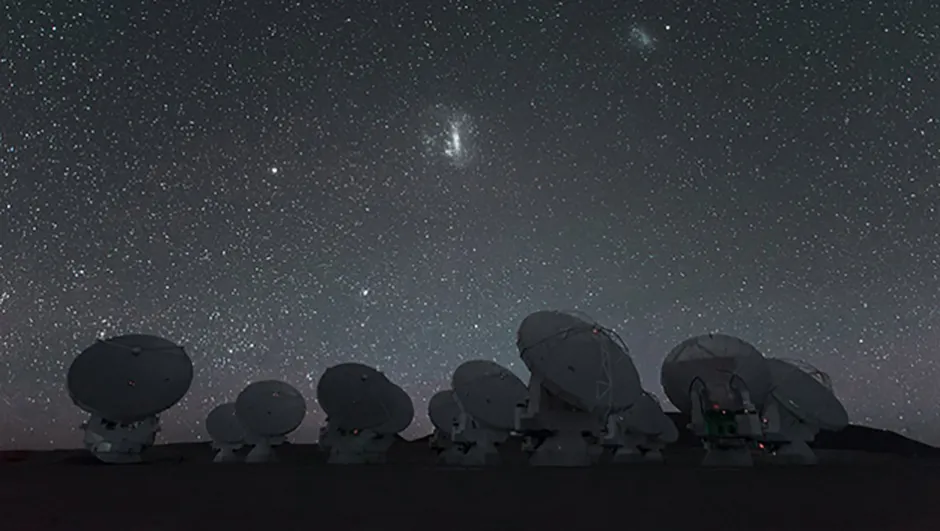The 'Leading Arm' is the name given to an arch of cosmic gas that connects two dwarf galaxies known as the Large Magellanic Cloud and the Small Magellanic Cloud.
These two galaxies orbit our own Galaxy, but also orbit each other, and the tug of war between the two has produced this connecting structure, which is thought to be as old as two billion years.
The gas in the Leading Arm is being ‘eaten’ by the Milky Way, generating the birth of new stars in our Galaxy, but which of the two dwarf galaxies is doing the tugging?
Andrew Fox of the Space Telescope Science Institute has been looking into the mystery.

Using the Hubble Space Telescope’s ultraviolet capabilities, he and his team were able to chemically analyse the gas in the Leading Arm.
They looked at seven quasars, which are the bright cores of active galaxies that are billions of lightyears away from the cloud.
They measured how the light filtered through the cloud; in particular the absorption of ultraviolet light by oxygen and sulphur.
“We’ve found that the gas matches the Small Magellanic Cloud,” says Fox.
“That indicates the Large Magellanic Cloud is winning the tug-of-war, because it has pulled so much gas out of its smaller neighbour.”
The process that creates the Leading Arm is a well-known phenomenon called ‘gas accretion’ in which gas falls into galaxies.
Normally this is a difficult process to observe in galaxies because they are so far away, but not on this occasion.
“As these two galaxies are in our backyard, we essentially have a front-row seat to view the action,” says Kat Barger of Texas Christian University, a collaborator in the study.
